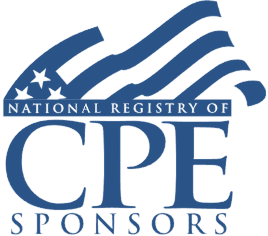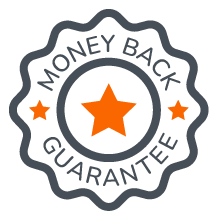Welcome! Save 30% on all CLE, CPE, and Professional Skills webinars, plus 15% off any annual pass with code HOLIDAY25
About the Course
Introduction
This webinar will explain how LLCs can convert to C corporations using tax-free methods under IRC Section 351 and Rev. Rul. 84-111.
Our panel of experienced tax professionals will walk through the three recognized conversion methods, the requirements for tax-free treatment, and the tax pitfalls that can trigger unintended gain. The session will include real-world examples, discussion of equity treatment (including profits interests and options), and key considerations for QSBS eligibility post-conversion.
Description
IRC Section 351 allows for the tax-free transfer of property to a corporation in exchange for stock, provided certain requirements—most notably, control—are satisfied. Revenue Ruling 84-111 outlines the three permissible methods for converting an LLC into a corporation: Assets Over, Assets Up, and Interests Over. Each method has distinct legal mechanics but aims to achieve the same result: a tax-free incorporation.
Converting an LLC to a C corp is often necessary for fundraising or achieving QSBS eligibility. However, significant tax traps exist, including failures of the control test, debt in excess of basis under Section 357(c), issuance of nonqualified preferred stock (NQPS), and missteps with Section 83(b) elections. Service providers with unvested equity and holders of convertible debt, SAFEs, or warrants face additional tax complexity.
Understanding the technical and practical issues involved in LLC-to-C corp conversions is crucial for business owners, tax professionals, and advisors looking to avoid unintended tax consequences and maximize long-term tax benefits like QSBS.
Listen as our panel of federal income tax professionals explains the key considerations, requirements, and examples of how to navigate LLC conversions under Section 351.
Presented By

Mr. Baker advises clients with respect to domestic tax matters and employee benefits and compensation. His clients include emerging companies, venture capital and private equity funds, and highly-compensated individuals.

Ms. Marschall has over 24 years of accounting, audit, and tax experience, including experience at a large public accounting firm, internal audit at a national bank, university Research Assistant and scholarly article author and co-author. Her tax and accounting engagements are geared towards individuals, and their small-to-mid sized businesses accounting engagements are geared towards individuals and small businesses.
-
BARBRI is a NASBA CPE sponsor and this 110-minute webinar is accredited for 2.0 CPE credits.
-
BARBRI is an IRS-approved continuing education provider offering certified courses for Enrolled Agents (EA) and Tax Return Preparers (RTRP).
Date + Time
- event
Monday, August 18, 2025
- schedule
1:00 p.m. ET./10:00 a.m. PT
I. Introduction to LLC Conversions
A. Why convert?
B. Legal and tax objectives
II. Rev. Rul. 84-111: Permitted Methods of Conversion
A. Assets Over
B. Assets Up
C. Interests Over
III. Requirements for Tax-Free Treatment Under Section 351
A. Property transferred
B. Stock received
C. Control under Section 368(c)
D. Business purpose
IV. Common Traps and Taxable Transactions
A. Failing the 80% control test
B. Section 357(c): debt in excess of basis
C. Issuance of nonqualified preferred stock
D. Negative capital accounts
E. Missed Section 83(b) elections
F. Treatment of unvested interests and service equity
V. Special Equity and Investment Considerations
A. Profits interests and liquidation preferences
B. Treatment of options and conversion math
C. SAFEs, investment warrants, and convertible debt
VI. QSBS and Section 1244 Implications
A. Requirements for QSBS eligibility
B. Holding period and $50M test
C. Stock received in conversions
D. Section 1244 stock limitations
VII. Examples and Scenarios
A. State-filed conversion
B. SAFE exchange implications
C. Treatment of profits interests in conversion
The panel will cover these and other critical issues:
- Understanding the “Assets Over,” “Assets Up,” and “Interests Over” conversion methods
- Meeting the control and property tests under Section 351
- Avoiding hidden tax traps like Section 357(c), NQPS, and missed 83(b) elections
- Planning for QSBS eligibility and preserving tax-free treatment
- Converting service provider equity and structuring replacement options
Learning Objectives
After completing this course, you will be able to:
- Identify exchanges that qualify for tax-free treatment under Section 351
- Determine what constitutes qualifying property in a Section 351 transaction
- Decide when taxpayers could benefit from a Section 351 exchange
- Ascertain potential missteps that could negate Section 351 tax-free treatment
- Field of Study: Taxes
- Level of Knowledge: Intermediate
- Advance Preparation: None
- Teaching Method: Seminar/Lecture
- Delivery Method: Group-Internet (via computer)
- Attendance Monitoring Method: Attendance is monitored electronically via a participant's PIN and through a series of attendance verification prompts displayed throughout the program
- Prerequisite:
Three years+ business or public firm experience preparing complex tax forms and schedules, supervising other preparers or accountants. Specific knowledge and understanding of pass-through taxation, including taxation of partnerships, S corporations and their respective partners and shareholders.

BARBRI, Inc. is registered with the National Association of State Boards of Accountancy (NASBA) as a sponsor of continuing professional education on the National Registry of CPE Sponsors. State boards of Accountancy have final authority on the acceptance of individual courses for CPE Credits. Complaints regarding registered sponsons may be submitted to NASBA through its website: www.nasbaregistry.org.

BARBRI is an IRS-approved continuing education provider offering certified courses for Enrolled Agents (EA) and Tax Return Preparers (RTRP).

BARBRI CE webinars-powered by Barbri-are backed by our 100% unconditional money-back guarantee: If you are not satisfied with any of our products, simply let us know and get a full refund. Contact us at 1-800-926-7926 .
Unlimited access to premium CLE courses:
- Annual access
- Available live and on-demand
- Best for attorneys and legal professionals
Unlimited access to premium CPE courses.:
- Annual access
- Available live and on-demand
- Best for CPAs and tax professionals
Unlimited access to premium CLE, CPE, Professional Skills and Practice-Ready courses.:
- Annual access
- Available live and on-demand
- Best for legal, accounting, and tax professionals
Unlimited access to Professional Skills and Practice-Ready courses:
- Annual access
- Available on-demand
- Best for new attorneys
Related Courses

State Tax Strategies for Athletes and Entertainers: Residency and SALT Deduction Limitations
Tuesday, January 6, 2026
1:00 p.m. ET./10:00 a.m. PT



